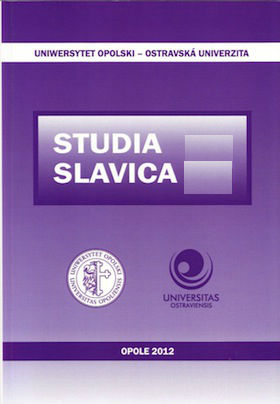K charakteristice postavy s vyprávěcí funkcí v některých ruských a českých
postmoderních románech
On the portrayal of characters with a narrative function in some Russian and Czech postmodernist novels
Author(s): Andrey ArtemovSubject(s): Literary Texts
Published by: Uniwersytet Opolski
Keywords: Novel; postmodernism; novel character; narrative function; Czech novel; Russian novel; turn of the 20th and 21st century
Summary/Abstract: A character and the problems associated therewith are one of fundamental issues of the literary work interpretation. Most works devoted to characters in literary works take a rather more specific view of this concept (i.e. particular character(s) of a specific novel is/are analyzed). Both in the Czech and Russian literary theory, there is a vast variety of works associated with analyses of individual characters or their groups, but the studies analysing a character as a theoretical concept have emerged rarely. What is more, there is not any single study to cover the characters of works that belong to one literary school. This contribution especially addresses the issue of a narrative function and its relation to a character. Based on the demonstrative materials, we can claim that the Czech and Russian postmodernist novels are characterized by a mixed method of separation of a narrative function and characters. These categories partly blend together and partly go through each other. We also want to highlight, among others, a wider grasp of a narrative function than ever before, where the influence of a narrative role is limited not only by living human beings. The postmodernist novel sees a deliberate gradual transfer from the world of characters to the world of an implicit author and other metamorphoses, which can also be explained by the impact of communication theories (to that effect that an implicit author or a character with a narrative function communicates in any way (often indirectly) with the characters of the story they talk about). The lines among the participants in the communication chain in the latest novels are “transparent”, as manifested by a certain effort to get rid of certain rules and concepts that is apparent in the postmodernist texts. The author considers the deconstruction effect one of the reasons for this approach but he also believes that it is one of the methods the authors use to demonstrate freedom of aesthetical methods, to experiment and to attempt to put “something incompatible” together. The postmodernist novels show the general “art for art’s sake” principle that was already present at the romanticists in the 19th century. Aesthetics of the postmodernist Russian and Czech novels manifests itself in a complexity of various text layers. One of the essential marks of postmodernist aesthetics in the concept of a character with a narrative function is that the “statements” are frequently made by someone (a drunk, a lunatic, a child, a ghost) whose words may be easily denied, disproved or modified. Using those characters, the authors seem to leave room for inserting other layers (illusive, apparent, “true” against the previous ones). The postmodernist novels include a special use of focalization where the characters look at themselves, describing themselves. This is enabled by the transfer from one condition to another, ability of some characters to reincarnate as well as by multilayered structure of the story.
Journal: Studia Slavica
- Issue Year: 18/2014
- Issue No: 1
- Page Range: 35-47
- Page Count: 13

